Deficiencies And Diseases – The 4 Common Causes Of Yellow Leaves On Alliums
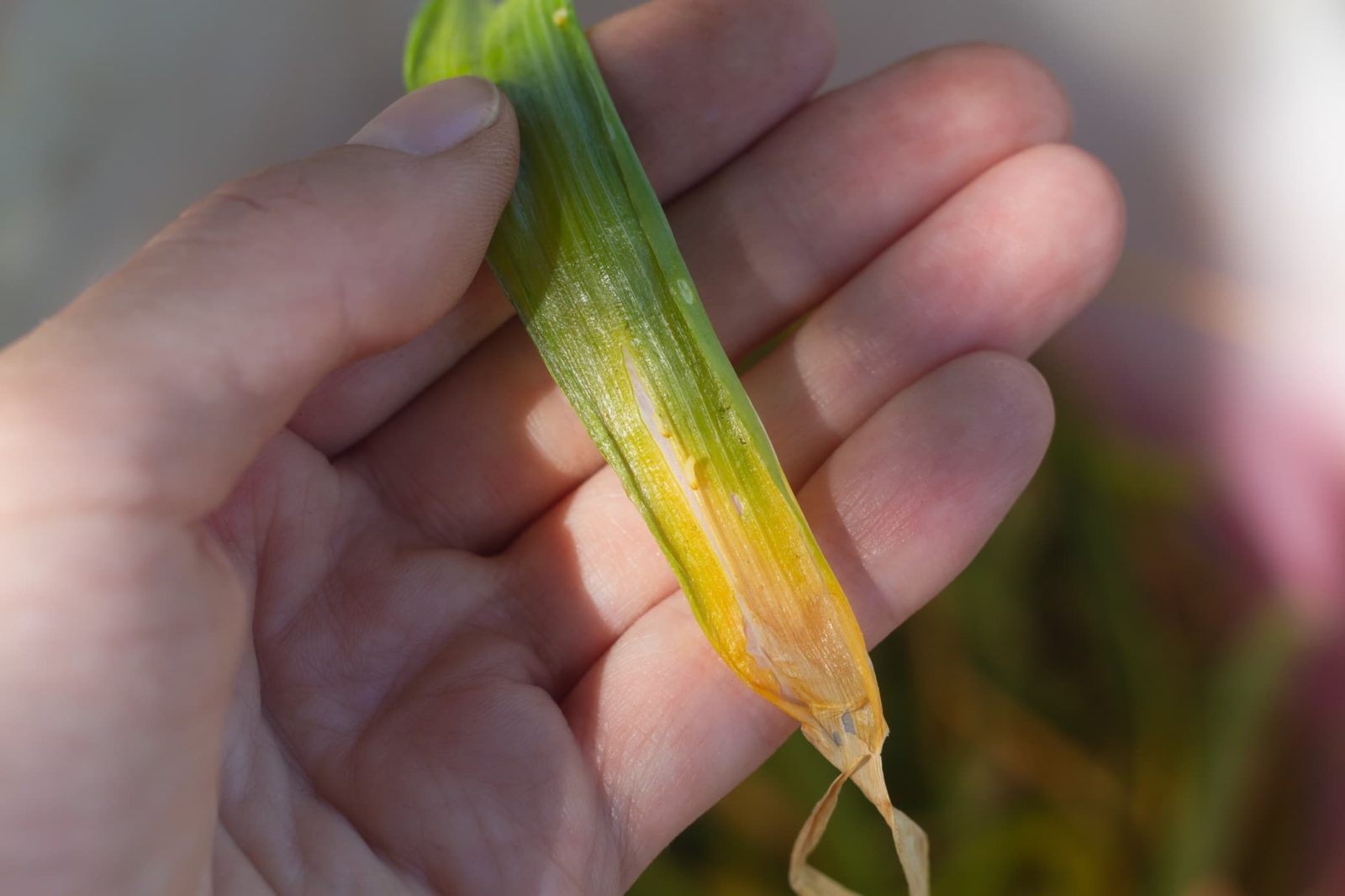

Elizabeth is a Permaculture Garden Designer, Sustainability Consultant and Professional Writer, working as an advocate for positive change. She graduated from the University of St. Andrews with an MA in English and Philosophy and obtained a Diploma in Applied Permaculture Design from the Permaculture Association.
Reviewed By COLIN SKELLY

Colin is a Horticulturist and Horticultural Consultant with experience in a range of practical and managerial roles across heritage, commercial and public horticulture. He holds the Royal Horticultural Society’s Master of Horticulture award and has a particular interest in horticultural ecology and naturalistic planting for habitat and climate resilience.
IN THIS GUIDE
ALLIUM GUIDES
Container Growing
Deadheading
Pruning
Varieties
Yellow Leaves
Alliums can be both edible and ornamental plants.
Whether you are growing onions, garlic, leeks or other edibles or common ornamental Alliums in a flower garden, these plants can be of great value and are relatively easy to grow.
However, whether you are growing Alliums for their vegetables or flowers, problems can arise.
One symptom that means that things are not necessarily going to plan is yellow leaves (which can often become brown and wilted in time).
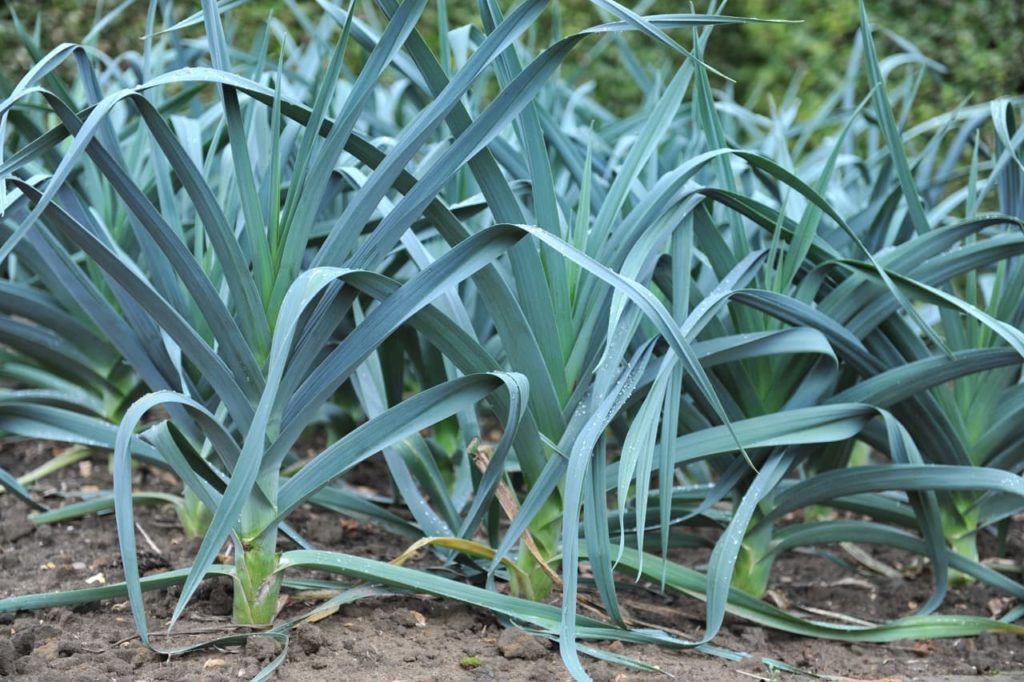
Though yellowing leaves are not always a sign of a problem, they can be caused by:
- The natural dieback of the plant (part of the lifecycle of the plant).
- Issues with water management – more typically a lack of water.
- Deficiencies due to a lack of essential nutrients in the soil.
- Plant diseases like onion white rot and downy mildew, which commonly affect members of the Allium family.
You can read more on each of these suggested causes – and the signs to look out for – below.
1) Natural Dieback
While yellow leaves can seem worrying, they are sometimes caused by a natural part of an Allium’s lifecycle and are not something to worry about.
Leaves can begin to turn yellow and die back even as the plant flowers, so this can simply be the natural course of things and not a sign of a physiological issue at all.
Once they begin to die back, the leaves can be removed from the Alliums with no ill effect.
Many gardeners will simply ensure that they hide the yellowing leaves on ornamental Alliums with other companion plants that still allow the lovely flowers to be seen.
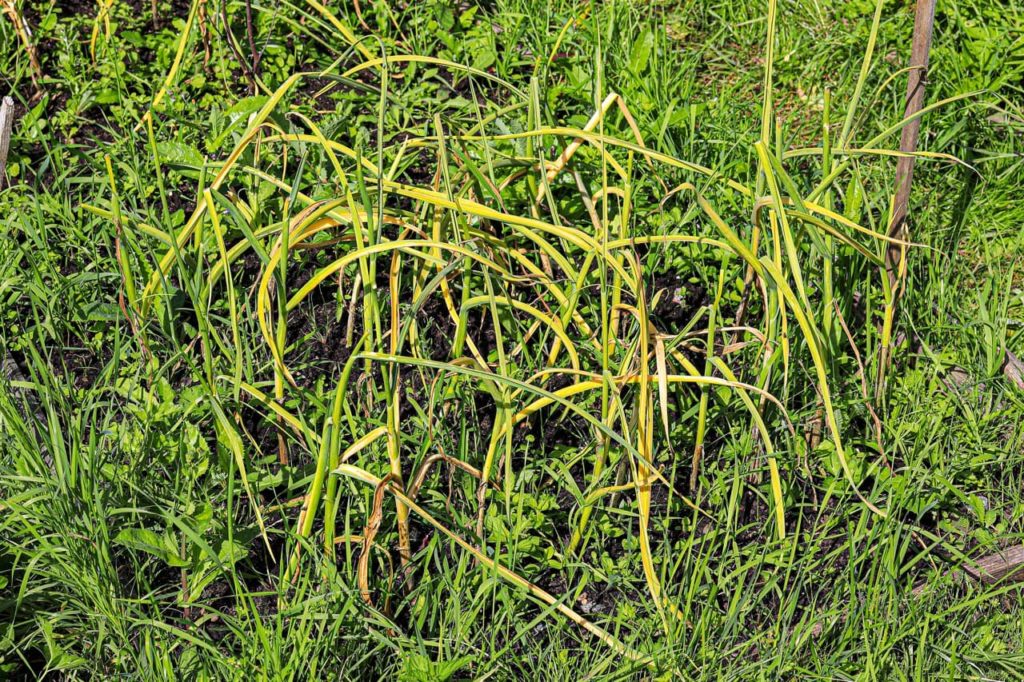
Of course, with edible types like bulb onions, yellowing foliage is a sign to look out for to understand when crops are ready to harvest.
Usually, you should harvest crops like onions or garlic when a large proportion of the foliage of the plants has begun to yellow and droop.
So, remember, timing is key when it comes to working out whether yellow leaves on Alliums are a sign of a problem or not.
If yellowing occurs when natural dieback is expected, then this is unlikely to be a problem at all.
2) Issues With Watering
Sometimes, when leaves on Alliums turn yellow before time, this can be related to watering issues.
The plants may either have received too much water or too little.
Severe drought can potentially cause plants stress and lead to yellowing and then browning leaves.
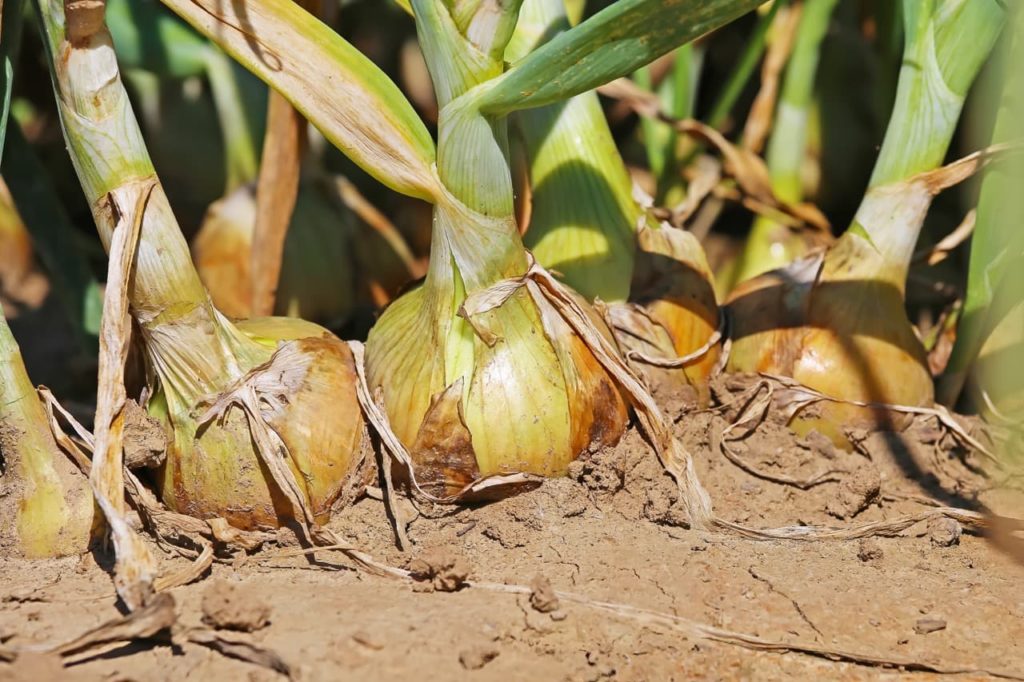
Waterlogging can also be a problem for many Alliums.
Alliums generally like and require free-draining conditions and are actually fairly drought tolerant, but when they sit in wet soil, the bulbs can rot which can manifest as yellowing leaves.
If the problem is water-related, you might be able to rectify the problem by getting the watering right or improving the drainage in your growing area or container.
3) Nutrient Deficiencies
Occasionally, yellow leaves on Alliums might be due to nutrient deficiencies of some kind.
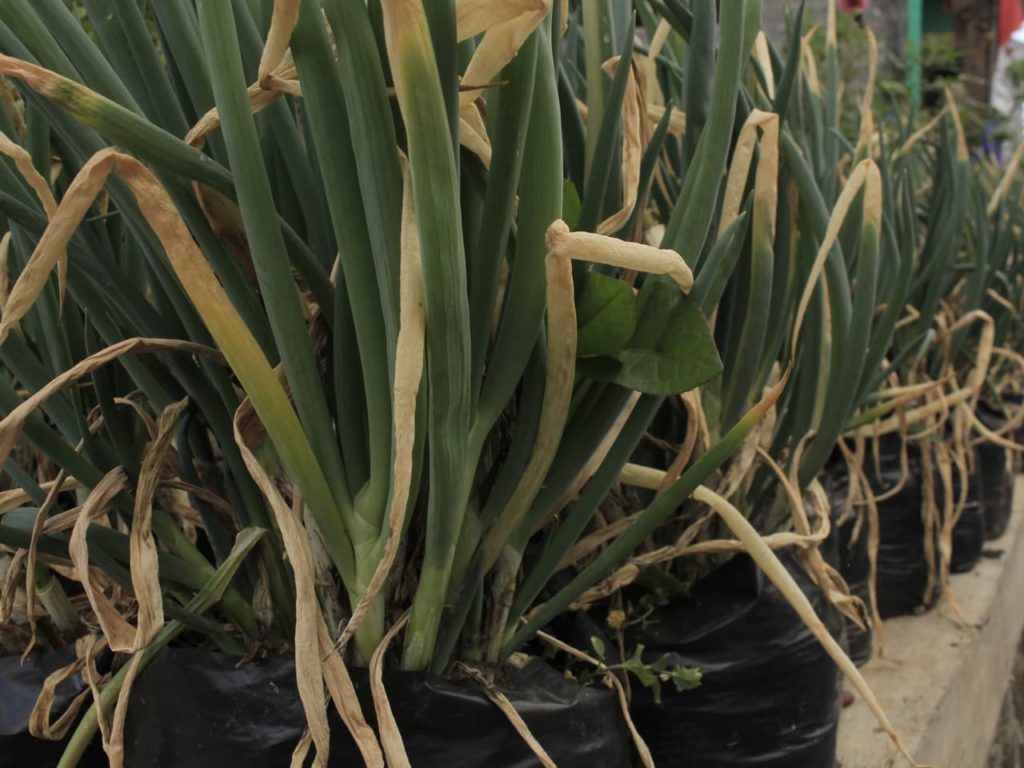
It can be challenging without soil testing to determine which nutrients might be in short supply in the soil.
However, feeding with an organic plant feed can often help to address any issues of this kind.
4) Plant Diseases
One of the more common reasons why Alliums may develop yellow leaves early is, unfortunately, due to plant diseases – to which these plants can be susceptible.
The plants in this family, both edible and ornamental, can fall prey to problems like onion white rot and downy mildew, both of which can turn the leaves yellow.
With onion white rot, yellowing leaves are one of the first signs that the bulbs are affected, infected by the soil-borne fungus Stromatinia cepivora.
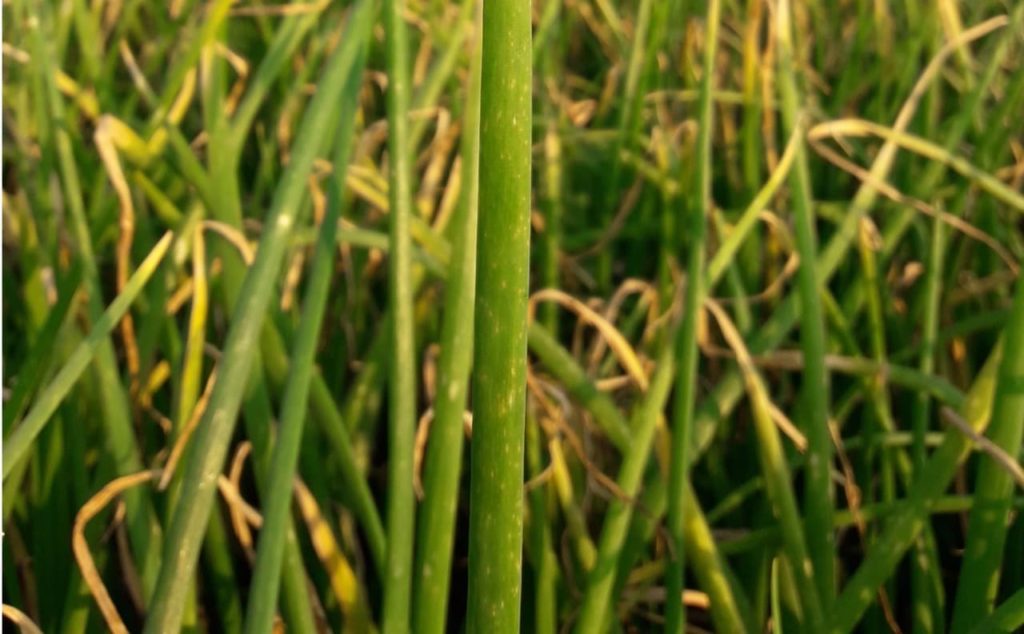
Unfortunately, this fungus remains in the soil and is very difficult to eradicate, meaning that you may not be able to grow any Alliums there for many years if this problem arises.
Onion downy mildew causes leaves to turn yellow and die back, with white and then purple fungal growth of the fungus-like Peronospora destructor, which spreads from the leaves to the bulbs.1Develash, R. K., & Sugha, S. K. (1997). Management of downy mildew (Peronospora destructor) of onion (Allium cepa). Crop Protection, 16(1), 63–67. https://doi.org/10.1016/s0261-2194(96)00056-7
The problem can spread from one year to the next in infected bulbs in the garden, so bulbs might have to be lifted rather than left in place over winter where this has been an issue.
“Both onion white rot and onion downy mildew are more likely to occur in cool, damp summers,” says Master Horticulturist Colin Skelly.
“If the former occurs, the disease will recur until a break in the presence of Alliums for a period of years. For the latter, the disposal of infected bulbs may be sufficient to allow growing the following year although spores can persist in the soil.”
References
- 1Develash, R. K., & Sugha, S. K. (1997). Management of downy mildew (Peronospora destructor) of onion (Allium cepa). Crop Protection, 16(1), 63–67. https://doi.org/10.1016/s0261-2194(96)00056-7
